
In the next few weeks, construction crews will begin building an anaerobic digester on the Goodrich Family Farm in western Vermont that will transform cow manure and locally sourced food waste into renewable natural gas (RNG), to be sent via pipeline to nearby Middlebury College and other customers willing to pay a premium for low-carbon energy.
For the developer, Vanguard Renewables, the project represents both a departure and a strategic bet. The firm already owns and operates five farm-based biogas systems in Massachusetts; each generates electricity on site that is sent to the grid and sold under the state’s net-metering law. The Vermont project, however, is Vanguard’s first foray into producing RNG—biogas that is refined, injected into natural-gas pipelines as nearly pure methane, and then burned to make electricity, heat homes, or fuel vehicles.
“Producing RNG for pipeline injection and vehicle fueling is the evolution of where everything is going in the biogas sector,” says John Hanselman, Vanguard’s CEO.
Biogas has been around for a long time in the United States, mainly in the form of rudimentary systems that either capture methane from landfills and sewage treatment plants and use it to produce small amounts of electricity, or aging digesters at dairy operations that might power a local farm and send some surplus power to the grid. But those are fast becoming outdated and out-produced by a new wave of large-scale renewable natural-gas projects that are springing up around the country.
These ventures are tapping into heretofore unexploited sources of energy: Some are capturing the vast amounts of methane generated by manure from some of the 2,300 hog farms that dot eastern North Carolina, some are building biodigesters to turn clusters of large California dairy farms into energy hubs, and some are seeking to divert food waste from landfills and transform it into vehicle and heating fuels.
Renewable natural gas is reaching a tipping point for several reasons. An increasing number of third-party operators like Vanguard are relieving farmers and landfills of the burden of running their own energy systems and are introducing more sophisticated technologies to capture methane and pump it directly into pipelines. Some states, including California, are passing laws requiring the development of renewable natural gas. And utilities across the country are starting to support these new initiatives, as evidenced by the new partnership between Dominion Energy and Smithfield Farms—the world’s largest pork producer—to develop new hog-waste biogas projects.
For proponents, the ultimate goal is to replace a significant portion of the fossil-derived natural gas streaming through U.S. pipelines with pure methane generated by human garbage and animal and agricultural waste.
“If you can recover energy before sending what remains back to the soil, that’s a great thing,” said Nora Goldstein, the longtime editor of BioCycle Magazine, which has covered the organics recycling and anaerobic digestion industries for decades. “You look at all those benefits and say, ‘Why aren’t more people doing this?’ The key is you need to do it correctly.”
An immense but untapped potential
The untapped potential—especially of the billions of gallons of animal manure and millions of tons of food waste generated each year in the U.S.—is immense. According to a 2014 “Biogas Opportunities Roadmap” report produced by the U.S. Environmental Protection Agency, the Department of Agriculture, and the Department of Energy, the U.S. could support at least 13,000 biogas facilities, fed by manure, landfill gas, and biosolids from sewage treatment plants.
Those new systems could produce 654 billion cubic feet of biogas per year—enough renewable energy to power three million homes. And a study by the World Resources Institute estimated that the 50 million tons of organic waste sent to landfills or incinerated every year in the U.S has the energy content of six billion gallons of diesel fuel, 15% of all diesel consumed by heavy-duty trucks and buses.
Experts say that the growing utilization of biogas could help lower greenhouse gas emissions from some of the toughest sectors to decarbonize—transportation, industry, and heating buildings—even as it reduces heat-trapping methane emissions, keeps organic waste out of landfills, and prevents manure runoff into rivers and water supplies.
Through anaerobic digestion, biogas can be made from any organic material—food scraps, agricultural residues, even the sludge left over from brewing beer. These materials are fed as a slurry into tanks where microbes feast on them in the absence of oxygen, destroying pathogens, producing methane and other gases, and leaving a nutrient-rich fertilizer as a byproduct.
Europe is far ahead
In the field of renewable natural gas, the U.S. is playing catch up with Europe, which has more than 17,400 biogas plants and accounts for two-thirds of the world’s 15 gigawatts of biogas electricity capacity. Denmark alone, a country of 5.8 million people, has more than 160 biogas systems. For a period last summer, 18% of the gas consumed in Denmark came from RNG produced by its anaerobic digesters. Flush with their success, Danish bioenergy firms estimate it will be feasible to fully replace the country’s natural gas with renewable natural gas within 20 years.
The former manager of the EPA’s anaerobic digestion programs, Chris Voell, was so impressed with Denmark’s biogas operations—which are highly engineered to digest a mix of household food scraps, residuals from food processing businesses, and livestock manure—that he now works for the Danish Trade Council to introduce Danish digester technology and business models to the U.S market.
As with most climate initiatives, California is leading biogas efforts in the U.S. The state’s Low Carbon Fuel Standard (LCFS)—which provides incentives for fuel producers to increase the amount of low-carbon or renewable fuels they supply and sell—is a key component of the state’s ambitious climate plan and has catalyzed the rapid growth of a new, lucrative market for RNG as a vehicle fuel.
Companies like Maas Energy Works and California Bioenergy have responded to these incentives by installing digesters at California’s dairy farms at a rapid clip. Maas has built 17 so far, with 12 more under construction and 32 others in development, according to its website. Both companies are racing to take advantage of valuable LCFS incentives.
And both are among a growing crop of specialized, investor-backed firms that build, own, and operate anaerobic digesters in the U.S. “With every day the industry is gaining more credibility,” Voell says. “We’re seeing more professional third-party companies. And in order to see this scale, it takes those professionals to come in and build 10, 20, 50 projects, and access a lot of equity investors. They want a portfolio of projects to invest in, not just one.”
Hog farms a target in North Carolina
In North Carolina, the abundant feedstock is hog manure. And the latest entrant in the RNG race is Smithfield, the world’s biggest grower of hogs. North Carolina is the second largest pork-producing state (after Iowa). Each day, more than 2,000 of its hog farms flush manure from nine million pigs into vast lagoons, which emit equally vast quantities of methane. Ninety percent of those farms are contract growers for Smithfield.
Late last year, Smithfield launched a joint venture, Align RNG, with a Virginia-based utility, Dominion Energy, to invest $250 million in covering lagoons and installing anaerobic digesters at nearly all of its hog-finishing farms in North Carolina, Utah, and Missouri over the next 10 years. Construction is already underway on four projects that will produce enough RNG to power 14,000 homes and businesses.
These systems will all be modeled on Optima KV, a biogas project in Kenansville, North Carolina, in the heart of hog country. Last year, Optima KV became the first project in the state to produce and inject RNG into an existing natural gas pipeline.
The factors that made Optima KV possible—along with the waste from 60,000 pigs on five nearby farms, and a centralized system to clean and upgrade the gas—include a state renewable energy portfolio standard law signed in 2007.
That law contained a requirement that utilities source at least 0.2% of their electricity from swine and poultry waste by 2020. The mandate helped push Duke Energy, one of the biggest utilities in the U.S., to sign a 15-year agreement to purchase 80,000 million Btus of RNG from Optima KV. That biogas will directly displace the use of fossil natural gas and generate 11,000 megawatt-hours of power in two of Duke’s power plants.
In Vermont, new digester technology
Vanguard’s new operation in Vermont represents an alternative model for scaling up RNG production. The company’s digesters are more complex and expensive—engineered to produce a consistent output of gas even as feedstocks and other conditions change—than the systems being built in California. The California systems basically cover huge dairy waste lagoons with plastic membranes and then extract, refine, and pipe the gas to customers.
“We take a more high-tech approach primarily because we need to produce a lot more gas from a much smaller footprint,” Hanselman says. “We don’t have the luxury of a 10,000-cow dairy.”
Along with the daily stream of 100 tons of manure from the Goodrich farm’s 900 cows, and 165 tons of food waste, a number of factors have come together to make Vanguard’s Vermont project possible. In Middlebury College, Vanguard found a large customer eager to slash its carbon footprint. A new law about to take effect in Vermont will ban food waste from landfills starting in 2020, forcing grocery stores and food processors to find new places to send their waste.
And Goodrich Farm will get free heat, monthly lease payments for hosting the system, and bedding for its cows from the leftover digested solids—cost savings that can offer a lifeline for dairy farmers in a period of disastrously low milk prices.
Hanselman, Vanguard’s CEO, says that a key element to expanding RNG is taking the burden of running the system off of farmers. Hanselman encountered many irate farmers who had negative experiences with a previous generation of digesters that had been sold to them as a low-maintenance, low-cost solution to their nutrient management problems. In fact, digesters are finicky machines, sensitive to changes in temperature and the variability of organic material in feedstocks. Says Hanselman, “We tell our farmers, ‘Your job is to make milk, healthy cows, and take care of your fields and soils. Let us run these machines.’”
More state mandates would help the market
RNG has flourished in Europe in part because of generous subsidy programs; such comprehensive policies are lacking on the federal level in the U.S., which has a chaotic patchwork of regional and state markets, utilities, incentives, and policies. But Hanselman and others foresee that in the next several years, more states will mandate renewable natural gas production, further strengthening the fledgling biogas market.
“It feels extremely similar to solar,” says Hanselman, who used to run a solar company. “We are in the early days of RNG. Everyone will be running from program to program trying to figure out which states are beneficial, and how to best get RNG into the marketplace.”
Market forces alone, however, won’t be enough to usher in a biogas revolution. The single policy that could supercharge the growth of biogas and RNG in the U.S., most industry observers and insiders agree, is a federally legislated price on carbon. But given that a carbon tax or comprehensive climate bill aren’t likely to emerge anytime soon under the current administration, Hanselman says the next best thing the federal government could do is reinstate the investment tax credit for digester systems, which lapsed in 2016.
Despite these challenges, Voell thinks there is now enough momentum to see biogas finally gain widespread traction as a renewable energy source in the U.S.
“I’m more encouraged now more than ever, because I’m actually seeing some projects getting built,” he says. “The states are stepping up with policies. And we’re seeing a revolution now where gas utilities are coming on board. Utilities wield a lot of power. If they decide RNG is something they’d like to see more of, then we’ll start to see the needle move more on the policy front.”
–Jonathan Mingle is a freelance journalist who focuses on the environment, climate, and development issues. He lives in Vermont. This post originally appeared at Yale Environment 360.
Weekly Newsletter
Get building science and energy efficiency advice, plus special offers, in your inbox.





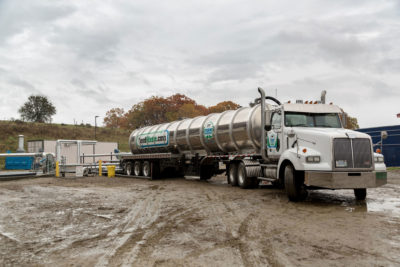
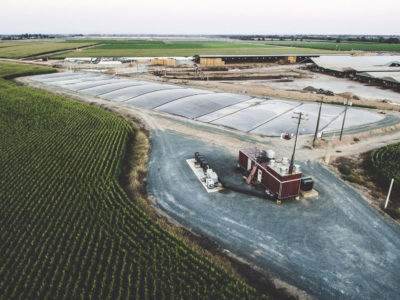
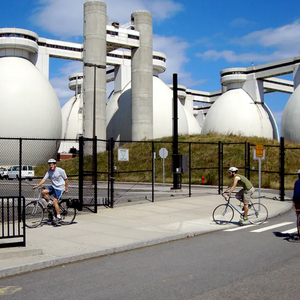
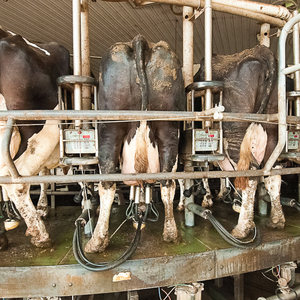

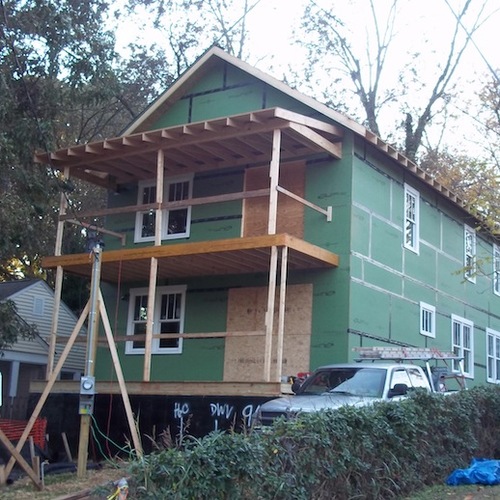






4 Comments
Thank you for a very informative article. The agricultural sector is an area where a lot of opportunities exist. The bio-gas systems are one example along with composting of waste to be used as fertilizer. Carbon sequestration in agricultural land is winning hand for both farmer and Earth inhabitant. Wind energy is playing out on a large scale here in the Midwest, hopefully we follow the lead of countries like Denmark.
https://www.reuters.com/article/us-climate-change-denmark-windpower/denmark-sources-record-47-of-power-from-wind-in-2019-idUSKBN1Z10KE
>"Carbon sequestration in agricultural land is winning hand for both farmer and Earth inhabitant. "
That's right! Biogas or not, for an agricultural product to be carbon neutral requires a lot of good practices and management on the feed stock end. A well managed pasture for bovines can be carbon (or carbon-equivalent) net-neutral even without the biogas if the pasture tending/grazing is managed to sequester carbon in the soil, but even with biogas from the bovine effluent, pasture management that doesn't include carbon sequestration in soils can still have a carbon footprint.
Biogas is a "good to have", but carbon sequestration in soil is a "must have", and may prove to be a bigger key to hitting the warming targets than efforts to convert to low-carb energy sources, at least in the near term. Biogas is only truly "low-carb" when coupled to carbon sequestering agriculture. I'm doubtful that it's very easy (if possible at all) to make hog farming carbon neutral under current farming practices for generating hog-feed. There is at least some hope for the (bovine) dairy and grass-fed-only beef industries. But even if not carbon neutral, biogas will lower the net carbon footprint of these industries, which is huge.
This is very much like the biomass fuel source problem. With properly managed forests and at some thermal efficiency level burning wood in powerplants can break even on overall carbon footprint. Without the proper soil-carbon management of the forests it becomes worse than burning fossil-gas for electricity pretty quickly. I sincerely doubt that the UK's huge DRAX biofueled power plant is significantly lower carb than burning coal, despite the documentation trail of where/how those wood pellets were allegedly "sustainably" harvested. Much of it is still coming from clear-cutting low-value timber in southeastern US swamp lands, with fairly substantial local environmental consequences beyond mere carbon, but even the carbon math is pretty dubious. Their latest goal is to become carbon negative by 2030, despite dubious current claims of carbon neutrality:
https://www.theguardian.com/business/2019/dec/10/drax-owner-plans-worlds-first-carbon-negative-business
Certainly the focus on carbon is important, even critical to our environment. But digesters improve the environment in other ways, too by sidestreaming the manure. VT and other agricultural areas currently have huge issues with manure runoff into their waterways. Current (traditional?) agricultural practice is to make a slurry of water and manure that is then spread on the fields as "fertilizer." But, since there is no attempt made to measure the nutritional content of the manure, farmers typically apply 2x-4x as much nitrogen equivalent to the fields as they require for seasonal growth. The excess runs off into the waterways or down into the aquifers. Digesters can produce a dry pelletized product with predictable nutritional value, providing a better source of fertilizer, reducing system-wide need for synthetic fertilizers and possibly most importantly, significantly reducing runoff from the fields. VT is currently under orders from the EPA to clean up their lakes and waterways, and digester technology is one of the larger parts of the solution. Coupled with good soil management practices, they can be a big part of carbon-neutral and environmentally friendly farming, even at industrial scales.
Sounds like a great way to address localized pollution.
Log in or create an account to post a comment.
Sign up Log in